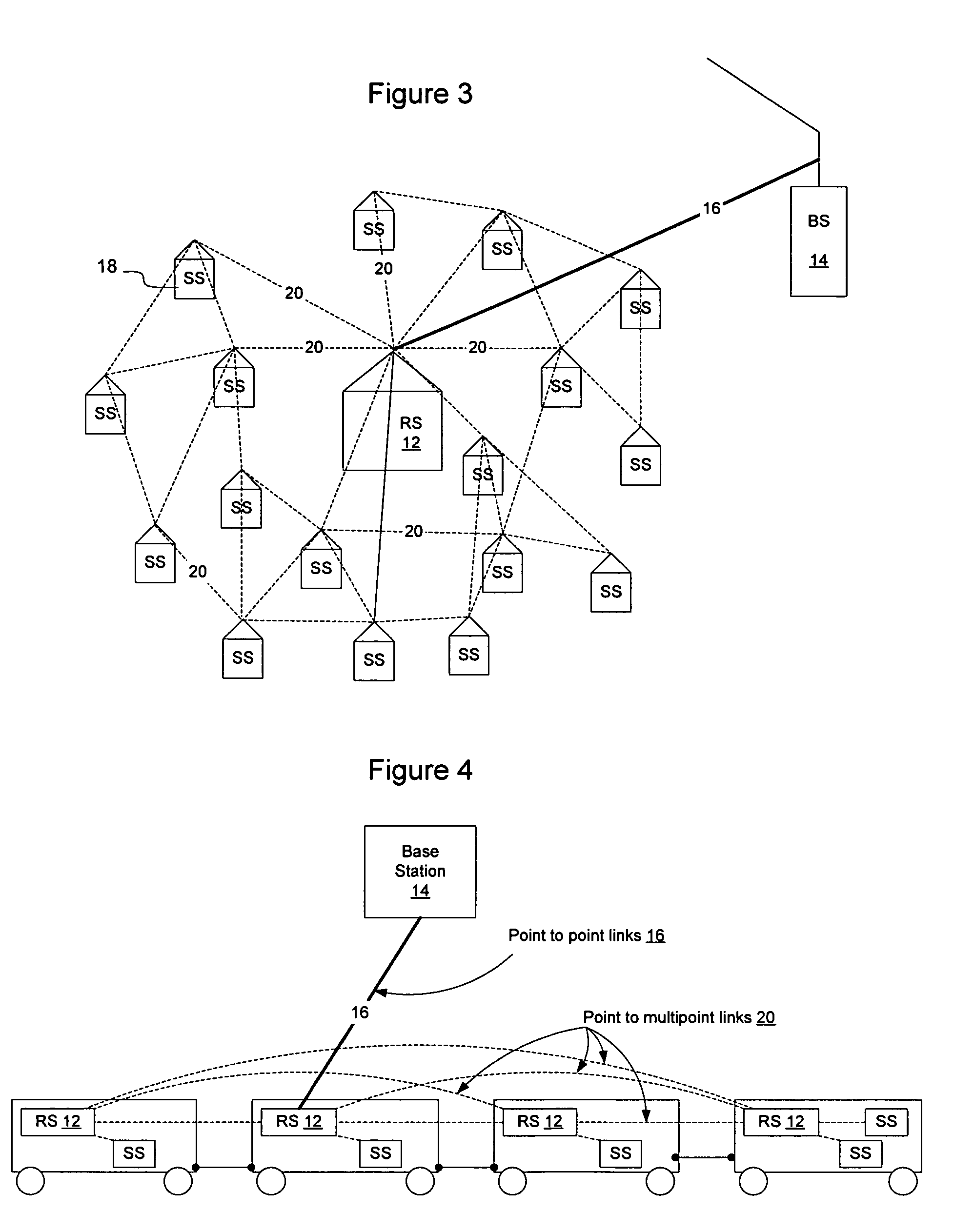Network element for implementing scheduled high-power PTP and low-power PTMP transmissions
a network element and low-power technology, applied in data switching networks, multiplex communication, high-level techniques, etc., can solve the problems of not being able to use fixed wireline access, difficult to deploy copper or optical cables, and high cost, and achieve the effect of minimizing interference between backhaul ptp and access ptmp networks
- Summary
- Abstract
- Description
- Claims
- Application Information
AI Technical Summary
Benefits of technology
Problems solved by technology
Method used
Image
Examples
Embodiment Construction
[0022]The following detailed description sets forth numerous specific details to provide a thorough understanding of the invention. However, those skilled in the art will appreciate that the invention may be practiced without these specific details. In other instances, well-known methods, procedures, components, protocols, algorithms, and circuits have not been described in detail so as not to obscure the invention.
[0023]FIG. 2 is a representative diagram of a frame format formed according to the 802.16 standard that may be used to transmit PTP and PTMP communications via a network element according to an embodiment of the invention. As shown in FIG. 2, the frame includes a downlink subframe 210 and an uplink subframe 220, containing timeslots to carry downlink bursts 240 and timeslots to carry uplink bursts 250. The downlink bursts may be scheduled to include PTP bursts in the downlink direction, PTMP bursts in the downlink direction, PTMP bursts in the uplink direction, and PTP bu...
PUM
 Login to View More
Login to View More Abstract
Description
Claims
Application Information
 Login to View More
Login to View More - R&D
- Intellectual Property
- Life Sciences
- Materials
- Tech Scout
- Unparalleled Data Quality
- Higher Quality Content
- 60% Fewer Hallucinations
Browse by: Latest US Patents, China's latest patents, Technical Efficacy Thesaurus, Application Domain, Technology Topic, Popular Technical Reports.
© 2025 PatSnap. All rights reserved.Legal|Privacy policy|Modern Slavery Act Transparency Statement|Sitemap|About US| Contact US: help@patsnap.com



